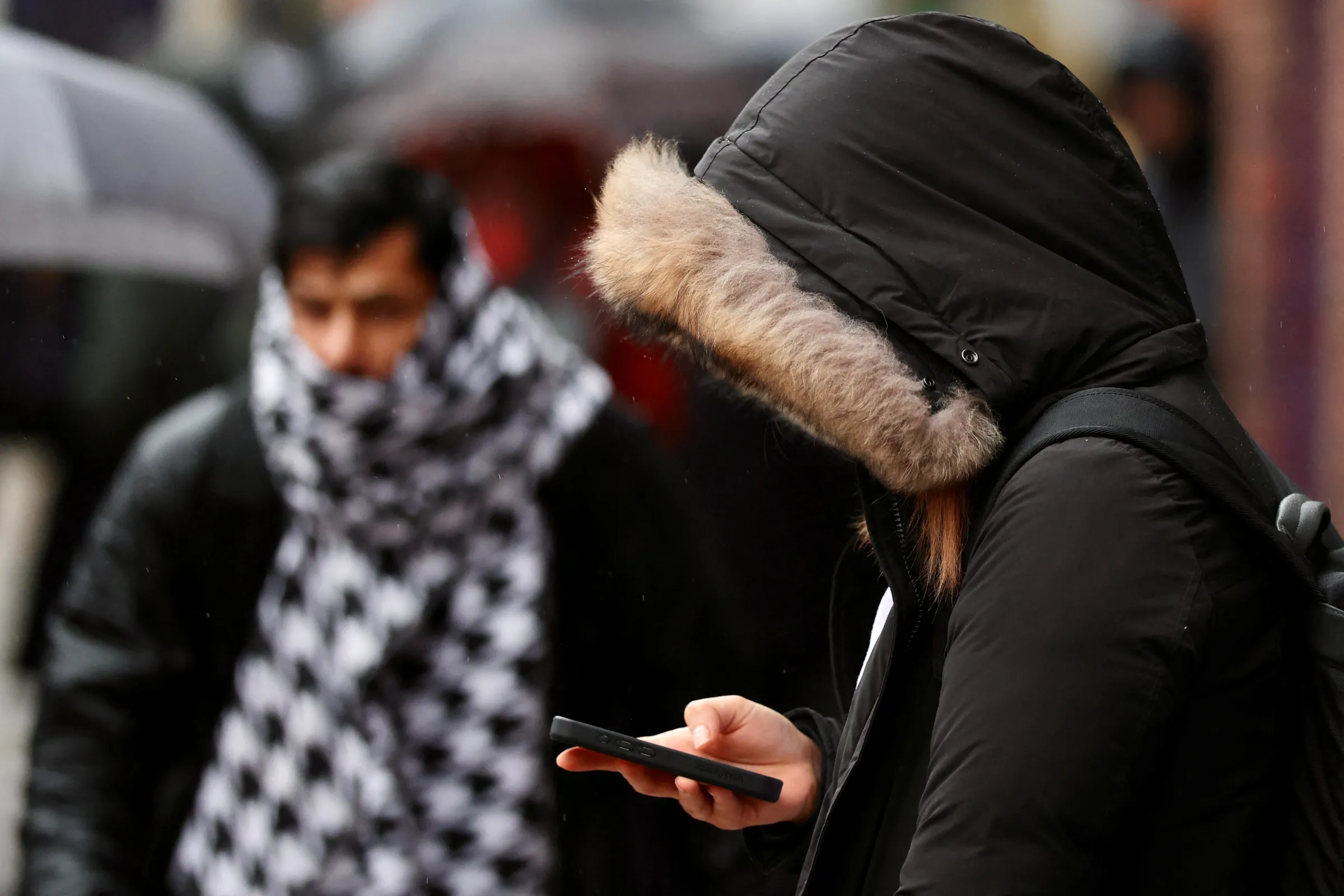This generation doesn’t need a TV series to show them something’s broken - they’re living it.
‘Adolescence’ shows the danger of tech writing its own rules
Opinion

Opinion
A person wearing a heavy coat looks at a mobile phone in London, Britain, January 6, 2025. REUTERS/Kevin Coombs
The Netflix hit Adolescence highlights how online bullying, harmful content and exploitation run rife on social media
Leanda Barrington-Leach is the Executive Director of the 5Rights Foundation.
Police officers storm into a quiet suburban home and arrest a 13-year-old boy accused of murdering his female schoolmate.
The opening scenes of the Netflix drama ‘Adolescence’ are hard to forget. What unfolds is a gut-wrenching story of bullying, rage, and radicalisation - fed by a digital world that doesn’t care who it harms as long as people keep watching.
In just three weeks, nearly 100 million viewers globally tuned in to watch the British-made TV show. Why? Because it reflects a reality far too many children already live.
The platforms children use every day - the ones meant to connect, entertain and inform - are also feeding them harmful content, warping their sense of self, and exposing them to exploitation.
And while the show may be fiction, the fear is very real and justified. As a parent, I share that fear. But to think this fear lives only with adults is not just naïve - it’s dangerous.
Young people are afraid too. More than a third of children in 30 countries have experienced cyberbullying. One in five have skipped school because of it.
At 5Rights Foundation, we work with over 200 youth ambassadors from more than 50 countries. They tell us again and again how the online world makes them feel anxious, exposed and judged.
“Social media is the most negative part of having a phone,” one child told us. “It leads to comparing yourself to every single person you see… young girls compare bodies, hair, beauty - every aspect of their lives.”
Another said: “We need to talk about the mental health impact of being online… kids are still uncomfortable speaking about their experiences.”
This generation doesn’t need a TV series to show them something’s broken - they’re living it. They know they are navigating a world built without them in mind. And they know that the platforms where they spend much of their time are knowingly choosing not to fix it.
But the public sees what’s happening. And when 100 million people watch ‘Adolescence’ in a matter of weeks, that’s not entertainment. That’s a cry for change.
Instead of course correction, however, tech companies are doing the opposite: open defiance, increasingly emboldened by political cover - particularly from the new U.S. administration.
Since returning to office, President Donald Trump has attacked tech regulation and made it clear that his priority is (further) securing Silicon Valley dominance in advanced technologies.
So, why would platforms prioritise child protection when an entire administration is fighting regulation on their behalf? The consequences are plain. Hate speech is on the rise, and young women are subjected to degrading labels online.
But here’s what gives me hope: we are not starting from scratch. Over the past decade, civil society, international organisations and governments have laid the groundwork. Frameworks like the UN’s General comment No. 25 and the Global Digital Compact clarify and reaffirm obligations for companies and states to respect and protect children’s rights in the digital world.
On this basis, jurisdictions from Indonesia to California have passed laws requiring tech companies to make their products safe for children by design. And behind the scenes, engineers around the world are developing technical protocols to make this not only possible but practical.

British Prime Minister Kier Starmer holds a roundtable meeting with writer Jack Thorne and producer Jo Johnson at Number 10 Downing Street in London, Britain, March 31, 2025. Jack Taylor/Pool via REUTERS
British Prime Minister Kier Starmer holds a roundtable meeting with writer Jack Thorne and producer Jo Johnson at Number 10 Downing Street in London, Britain, March 31, 2025. Jack Taylor/Pool via REUTERS
We know what needs to be done and the tools are there for companies to do it. We cannot expect for-profit platforms to police themselves.
We should not ban children from a digital world that, at its best, can be a space for learning, exploration, and connection. And we cannot expect parents and teachers to carry the burden alone.
We must insist that governments stand their ground. That they don’t treat children’s safety as a pawn in trade negotiations. That they don’t blink when tech companies push back.
This isn’t a matter of innovation versus regulation. It’s a question of whether we’re willing to let a handful of companies trample on children’s rights and shape how they live.
Children shouldn’t be left to shoulder the consequences of adult inaction. It’s time for governments to hold the line - and deliver on the promises they’ve already made.
Any views expressed in this opinion piece are those of the author and not of Context or the Thomson Reuters Foundation.
Tags
- Disinformation and misinformation
- Online radicalisation
- Polarisation
- Tech and inequality
- Tech regulation
- Social media
Go Deeper
Related
Latest on Context
- 1
- 2
- 3
- 4
- 5
- 6

















